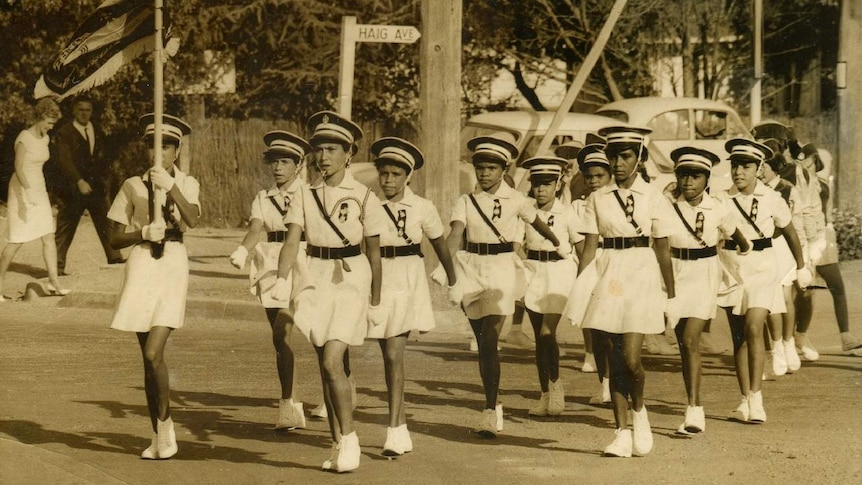Aboriginal sporting history has been brought to life in a new book that details how a group of women from a south-east Queensland mission nearly won a national title in the most popular female sport of the era.
Faced with a future working in heavily controlled conditions in the 1950s, a group of young Aboriginal girls from Cherbourg held their head high and marched.
Marching was the lead sport for Australian women at the time, with participants dressing up in white boots, skirts, sashes and formal hats to perform at agricultural shows, city parades and for visiting dignitaries.
Teams competed against each other on weekends and were judged on their timing, uniforms, synchronization and performance.
On the government-controlled mission at Cherbourg, it was the only sport available to the young women.
A sense of pride
Aunty Lesley Williams began marching in Queensland’s only Indigenous troupe in 1957 when she was just 11.
The sense of pride gave her as a young person who had been denied her culture and freedom was something she would never forget.
“We were told you are going to have this career. Stop practicing your culture. You can’t speak your language,” Aunty Lesley said.
“If you look back to this point in time, it was about controlling this group of people.”
Dressed in uniforms created in the community, the Cherbourg Marching Girls went on to become the best in Queensland in the six years they competed, and then went even further to place second at the national championships.
“We had a lot of fun. We were so proud,” Aunty Lesley said.
“We’d travel around on the back of the settlement truck that carted wood, flour and meat down from the slaughter yard to the butcher shop.
“When it was time for us to travel, it was scrubbed down, seats were put on it and we didn’t care because we wanted to travel and be part of what was happening in the wider world.”
why marching mattered
Aunty Lesley, her sister Sandra Morgan and a Cherbourg committee, have worked alongside co-authors Professor Murray Philips and Dr Gary Osmond from the University of Queensland to document the history in a book entitled, Marching With A Mission: Cherbourg’s Marching Girls.
Professor Phillips studied sport history and said she was researching in Cherbourg when the idea was born.
“We had just finished the day and [were] walking to the car when one of the female elders said, ‘When are you going to tell our story?’
“And we swung around and said, ‘What story is that?,’ and they said, ‘The marching girls’, and that’s how it started.
“The key drivers at Cherbourg are some women elders and they were giving us all this information about the men’s sport, Eddie Gilbert, Frank Fisher and all these other high-profile male athletes.”
The book’s storyline follows the history of marching, the opportunities it offered and how the sport shaped their lives.
Professor Phillips said it was an important period for Queensland First Nations women.
“You’ve gone from that era of protection to assimilation, and these girls really rode the crest of that wave,” she said.
“For many of these women, this was the first opportunity to get out of Cherbourg and see the opportunities that lay beyond.”
.
